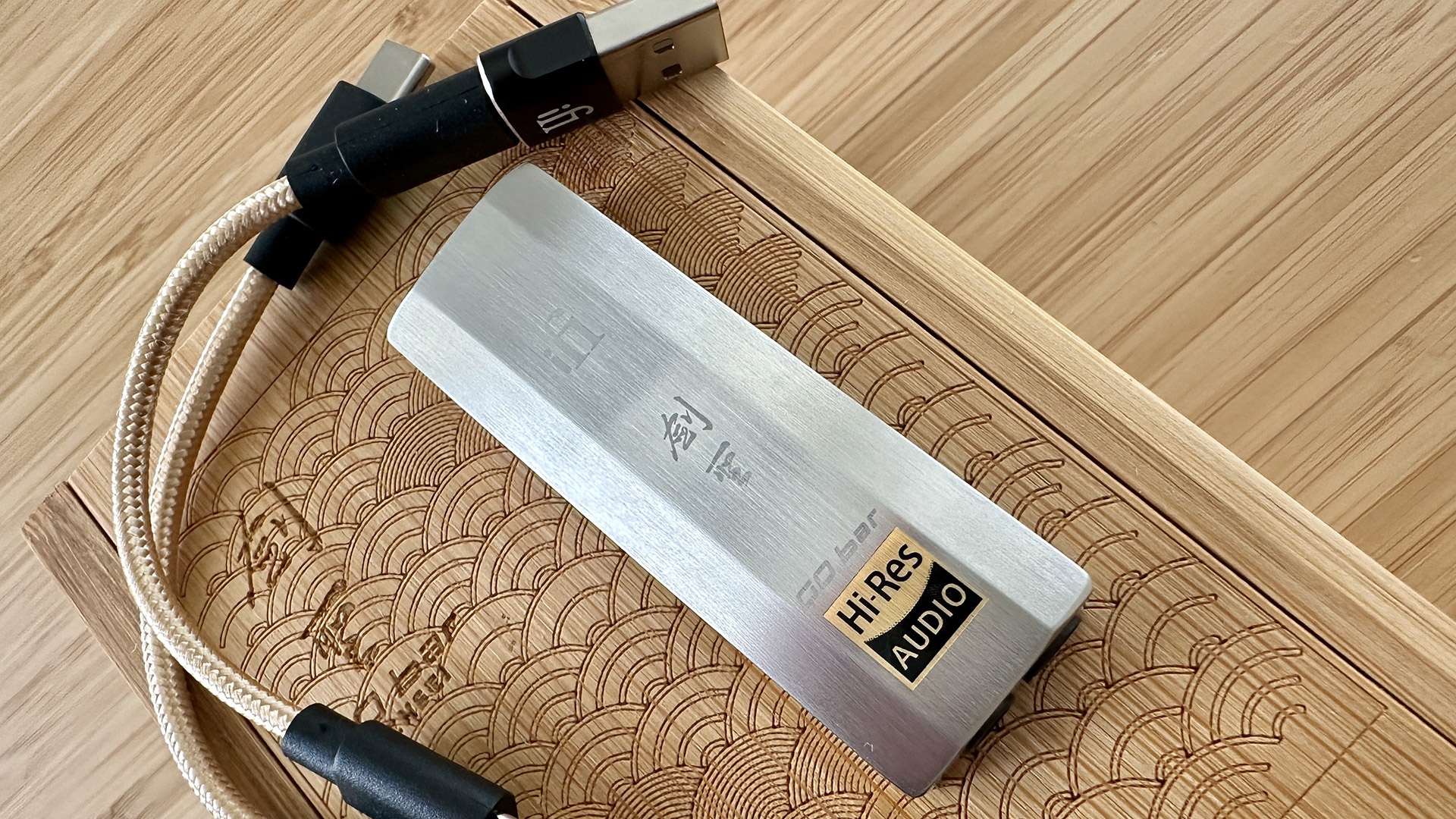
iFi GO Bar Kensei review: Two-minute review
The iFi GO Bar Kensei is another reminder that iFi knows precisely what’s what when it comes to headphone amps and DACs of all shapes, sizes and prices. More often than not, it’s among the leaders in any given market. And so it’s decided what the humble USB DAC/headphone amp needs is a bit of glamour to go along with performance. Hence, the GO Bar Kensei.
On paper and in the palm, it makes a lot of sense. The specification is extensive, the finish – all tactile Japanese stainless steel that catches the light – is unarguably upmarket. If you want to put an absolute rocket up the sound of your smartphone and enjoy ownership of a premium product as you do so, it would seem to be just the ticket.
And in practice, the GO Bar Kensei makes good on a lot of what it promises. It’s a deft, rhythmically adept and impressively spacious listen, able to retrieve a huge amount of detail and put it all into the proper context. It has plenty of dynamic headroom, and is able to apply its talents to any digital audio file no matter where you source it from.
It overplays its hand somewhat at the top of the frequency range, though – ‘brilliance’ is not always a positive when it comes to treble sounds, especially when there’s not the substance to balance it out. And there’s a periodic glitch in the way the GO Bar Kensei performs that sends an unpleasant burst of noise to your headphones at the start of a new file, too. Both of these things undermine the iFi somewhat when compared to the best portable DACs, and make it a fair bit less compelling than it otherwise would be.
iFi GO Bar Kensei review: Price and release date
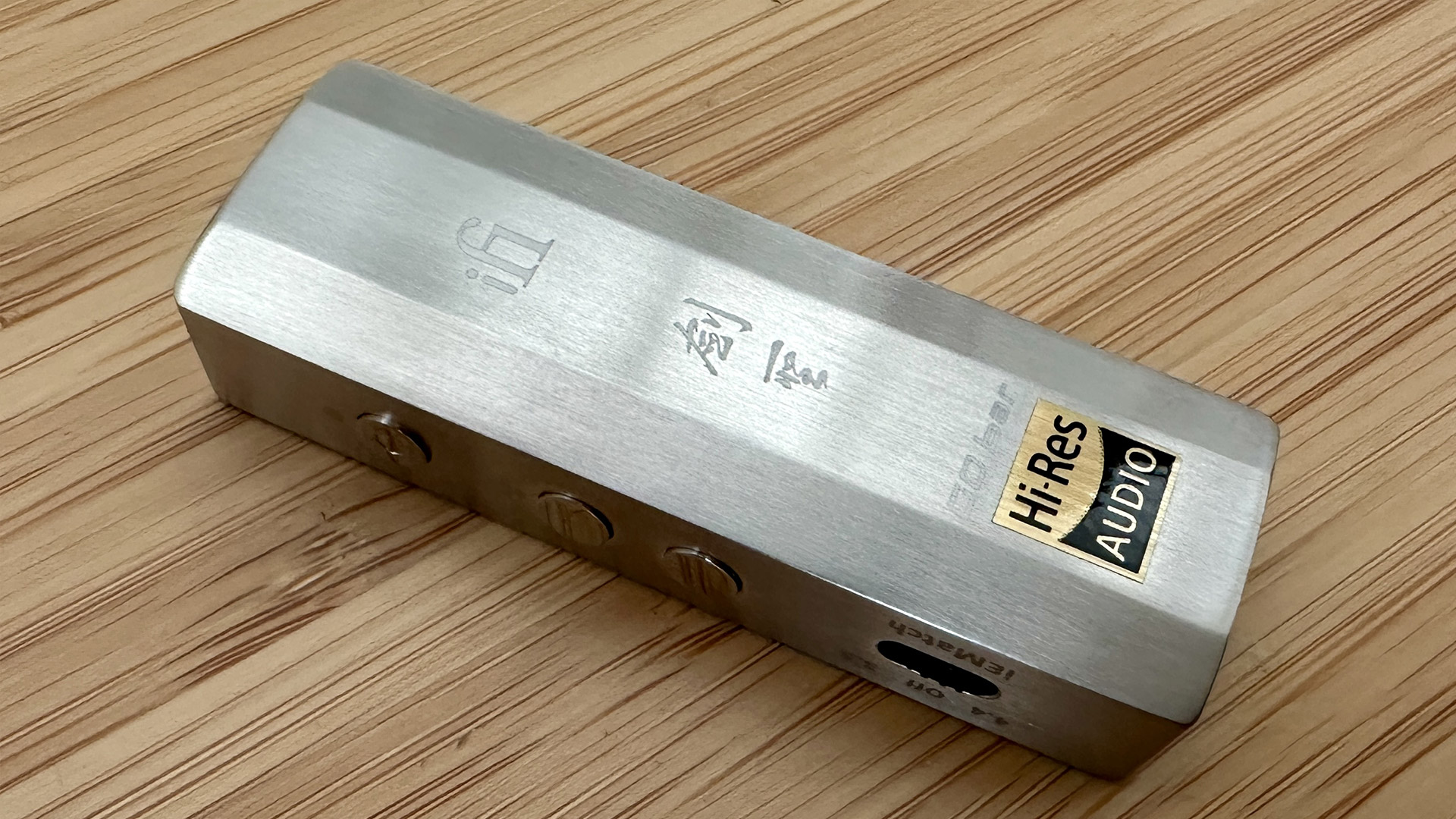
- Released in March 2024
- Priced at $499 / £449 / AU$769
The iFi GO Bar Kensei portable headphone amp/DAC is on sale now for $449 in the United States, £449 United Kingdom and in Australia, it will set you back AU$769 or thereabouts.
The world is not short of portable USB headphone amp/DACs, of course. What it is slightly shorter of is really quite expensive USB headphone amp/DACs, and shorter still of really quite expensive USB headphone amp/DACs that have gotten completely carried away with Japanese sword master analogies. So this iFi has quite a bit to prove…
iFi GO Bar Kensei review: Features
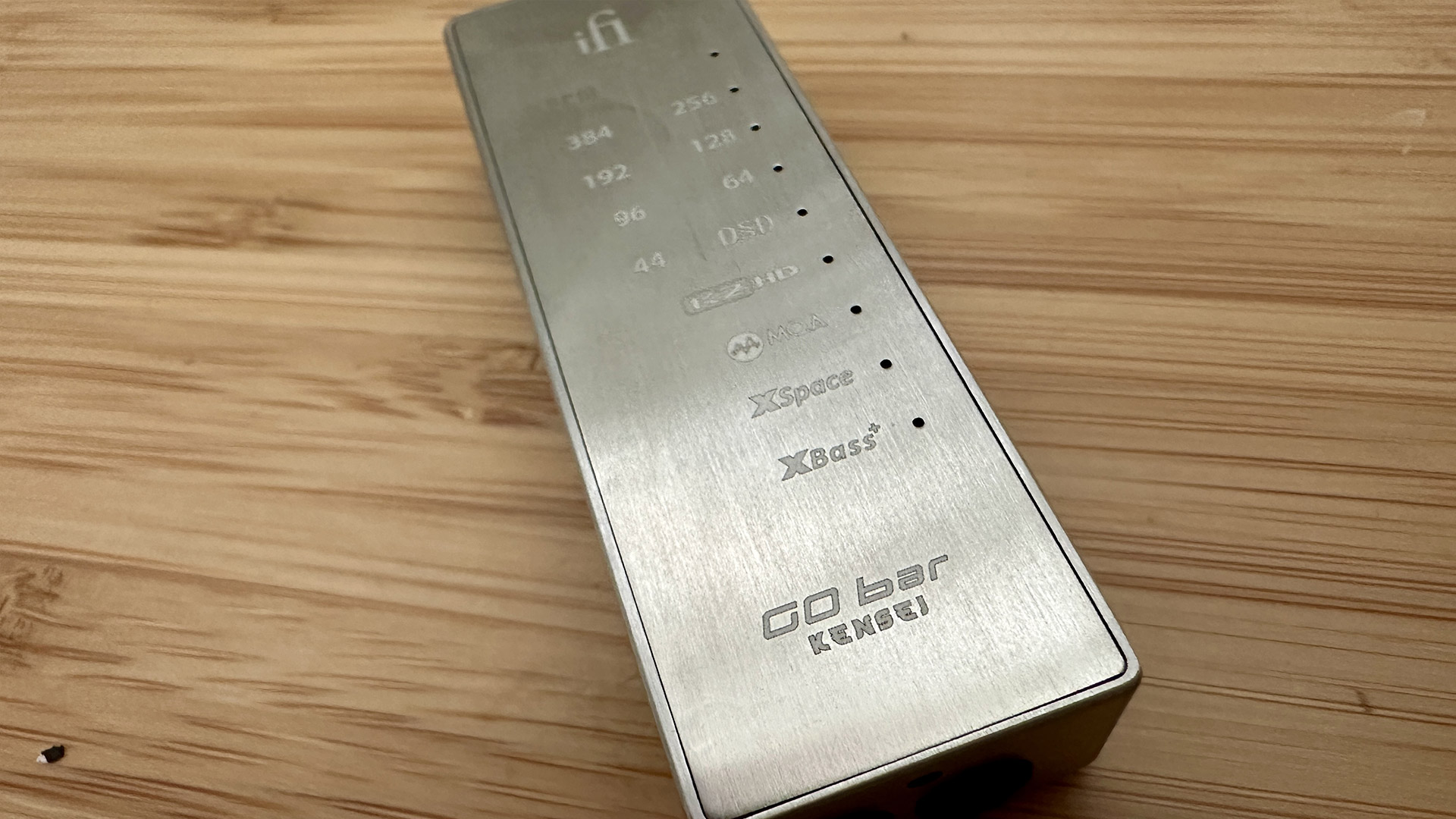
- 32bit Cirrus Logic DAC
- ‘K2HD’ audio processing technology
- Balanced and unbalanced outputs
The GO Bar Kensei is necessarily compact, but that hasn’t prevented iFi from cramming it with features.
On the inside, iFi has sourced components from companies as well-regarded as muRata, Panasonic, TDK and Tantalum. These all serve to facilitate a 32bit Cirrus Logic DAC chipset that supports digital audio files of up to 32bit/384kHz PCM and DSD256 resolution, with full MQA decoding on board too. The DAC uses a 16-core XMOS microcontroller to process the audio data received at the USB-C input.
And iFi has deployed technology derived from JVCKenwood too – ‘K2’ was originally developed to try and bring an ‘organic quality’ and ‘sound quality correction’ (JVCKenwood’s words, not mine) to digital recordings. iFi has breathed on it to the point that JVCKenwood asserts that it’s ‘the original ideal K2 sound’. Which is why, presumably, iFi has decided to refer to it as ‘K2HD’.
Further finessing of the sound is available via four digital filters and a couple of analogue processing modes, all of which will be familiar to anyone who’s paid any attention to iFi products released over the last few years. ‘Bit-perfect’, ‘GTO’ (which stands for Gibbs Transient Optimised, of course), ‘minimum phase’ and ‘standard’ are all, supposedly, able to make particular genres of music sound, well, more genre-ish. ‘XBass+’ intends to accentuate the lower frequencies, and ‘XSpace’ wants to expand the sound field.
No doubt you’ll investigate all of these options at your leisure. But no matter what your eventual preference(s), getting sound out of the GO Bar Kensei happens using either the 3.5mm unbalanced or 4.4mm balanced output at the opposite end of the device to the USB-C slot.
Features score: 5 / 5
iFi GO Bar Kensei review: Sound quality
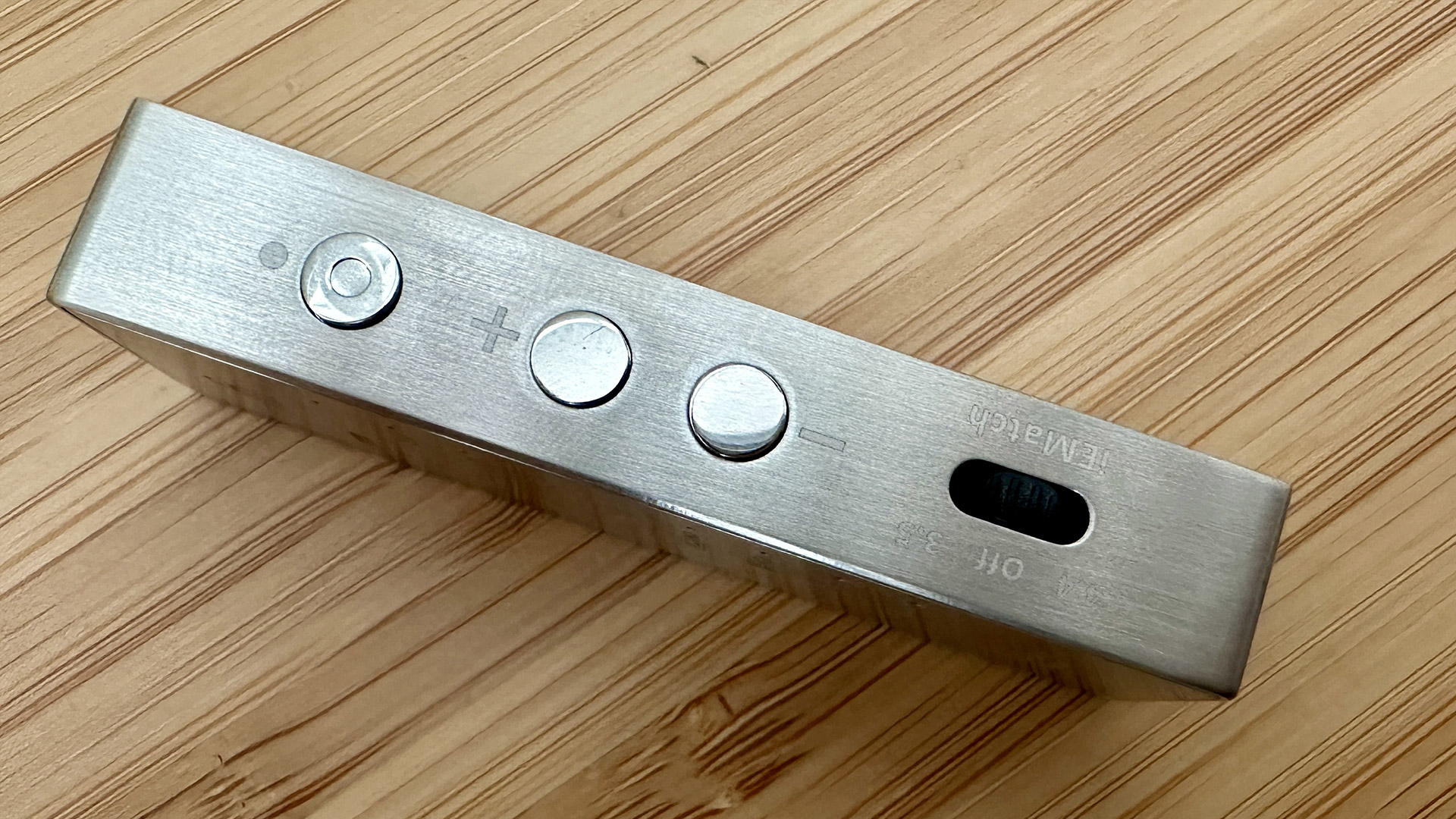
- Rapid, detailed and spacious sound
- Positive and dynamic attitude
- Overplays its hand with treble sounds
The sound quality the GO Bar Kensei delivers is, I reckon, a game of two slightly lop-sided halves plus a bit of extra time. And everything I’m about to say applies no matter which of the many filter and/or processing options you deploy. It’s possible to fiddle around the edges of the iFi’s sound, but its fundamental character is always apparent.
The first of the halves centres on just how rapid, detailed, open and organised a performer the GO Bar Kensei is. It doesn’t matter if you’re playing a 24bit/96kHz FLAC file of David Bowie’s Low, a Dolby Atmos stream of De La Soul’s 3 Feet High and Rising or a 24bit/192kHz copy of Billie Eilish’s When We All Fall Asleep, Where Do We Go? - every time, the iFi extracts and contextualises a huge amount of both broad and fine detail. No occurrence is too felting or too far back in a mix to escape its attention – and as a result, the sensation that you’re getting a complete picture is always present.
It digs reasonably deep at the bottom of the frequency range, and controls the low end to the point that rhythmic expression is good and momentum is undeniable. The big, open and well-defined nature of its soundstage allows every element of a recording the space it needs to properly express itself, and it allows vocalists in the midrange to communicate explicitly. There’s real eloquence and directness to the way the GO Bar Kensei delivers a singer, a sensation of positivity that feeds into the overall idea of ‘performance’ and ‘unity’.
Dynamic expression is good too, whether it’s the shifts in volume and intensity that many recordings indulge in or the more subtle (but no less significant) harmonic variations in a solo voice or instrument. The iFi can be muscular when needs be, but it’s just as capable of being tender and delicate.
The second half concerns the way the GO Bar Kensei deals with the top of the frequency range. To put it bluntly, it’s altogether too confident where treble sounds are concerned – they’re overstated in every circumstance, and tonally they lack substance and body. The top end here is crashy and splashy, hard-edged and thin – and these unhappy traits are only compounded by increases in volume. If you pair the iFi with similarly treble-centric headphones then your teeth will constantly be on edge.
And there’s extra time, which has nothing to do with the way the GO Bar Kensei sounds but everything to do with the way it performs. On occasion, when one file ends and the next begins, the iFi will let loose a very short burst of utterly startling electrical noise, a sort of exclamation of white noise that is, of course, entirely unwelcome and obviously unintentional. It doesn’t happen every time, but it happens often enough. And it’s not as if it’s provoked by switching from one streaming service to another or anything like that – simply hitting ‘play’ on a playlist can goad it. As I say, this is by no means a constant – but in some ways, it’s even more upsetting because it doesn’t happen every time. It seems to happen (to me, anyway) more often when using iFi’s USB-C/Lightning connector attached to an iPhone than when using the USB-C/USB-C cable with a Samsung smartphone… but either way, I’m not a fan.
Sound quality: 3.5 / 5
iFi GO Bar Kensei review: Design
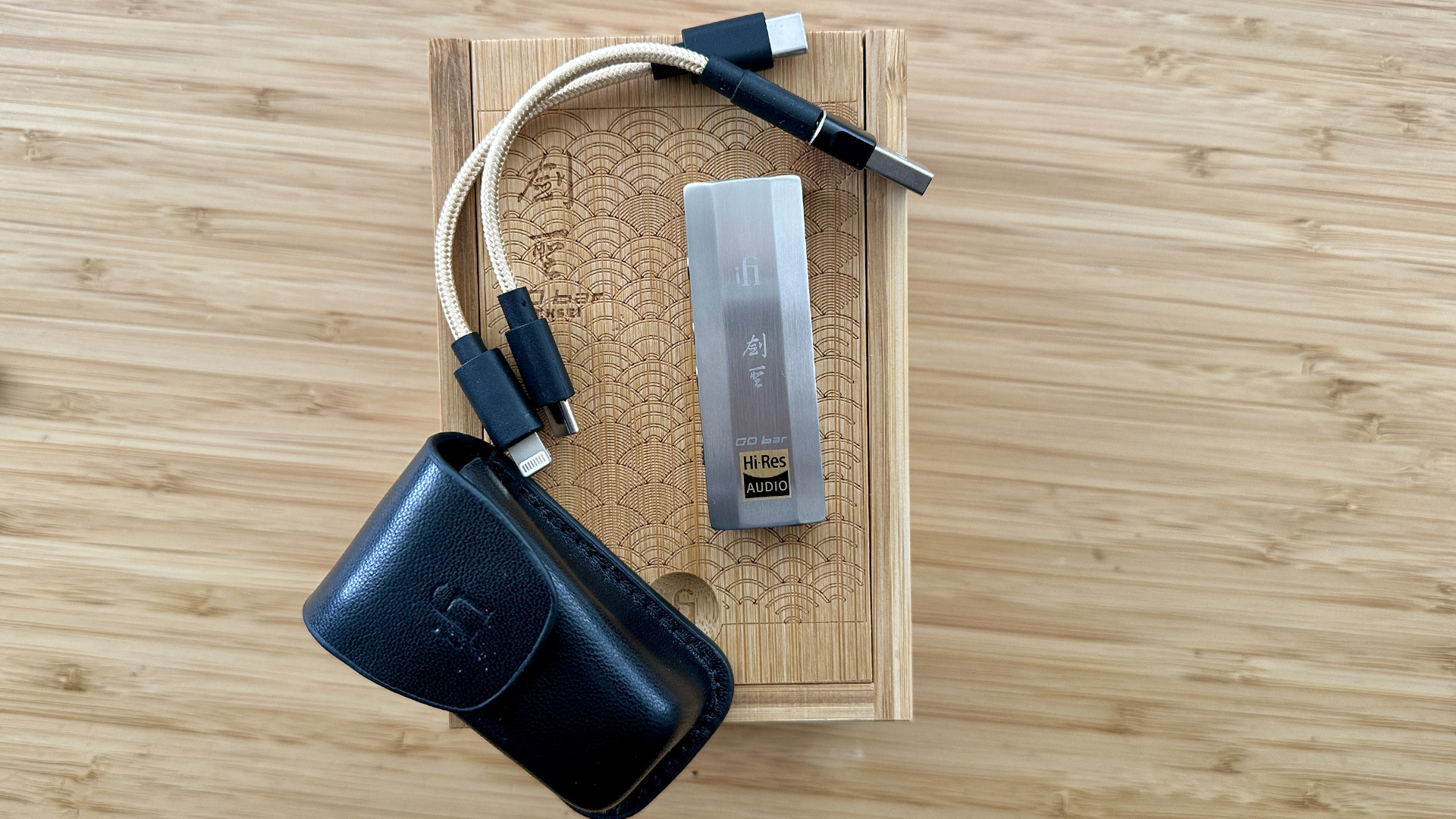
- 65 x 22 x 13mm (HxWxD)
- Japanese stainless steel
- Very, very small user interface
At 65 x 22 x 13mm (HxWxD) the GO Bar Kensei is certainly pocket-sized, but at almost 66g it feels quite dense. The fact that it’s built almost entirely from Japanese stainless steel is probably to blame – but while it puts a little more strain on your pocket that most USB DACs, there’s no denying the iFi feels (and looks) like a premium product.
At one end of the stick there’s a USB-C slot, and at the other you’ll find the 3.5mm and 4.4mm outputs. Along one side there are a few controls – a multi-function button that allows you to check out the various digital filters and analogue processing modes, a button each for ‘volume up’ and ‘volume down’ and the ‘IEMatch’ switch. This last has three positions: ‘off’, ‘3.5’ and ‘4.4’.
On the rear of the stick, etched into the steel surface and consequently only visible when a) very close, and b) in favourable light, are a strip of miniscule LEDs that let you know what’s what (if your eyesight is up to it) in terms of mode, file type and file size. And on the top surface, there’s a company logo and some Japanese characters reading ‘Kensei’ – which apparently translates as ‘sword saint’.
Design score: 4 / 5
iFi GO Bar Kensei review: Usability and setup
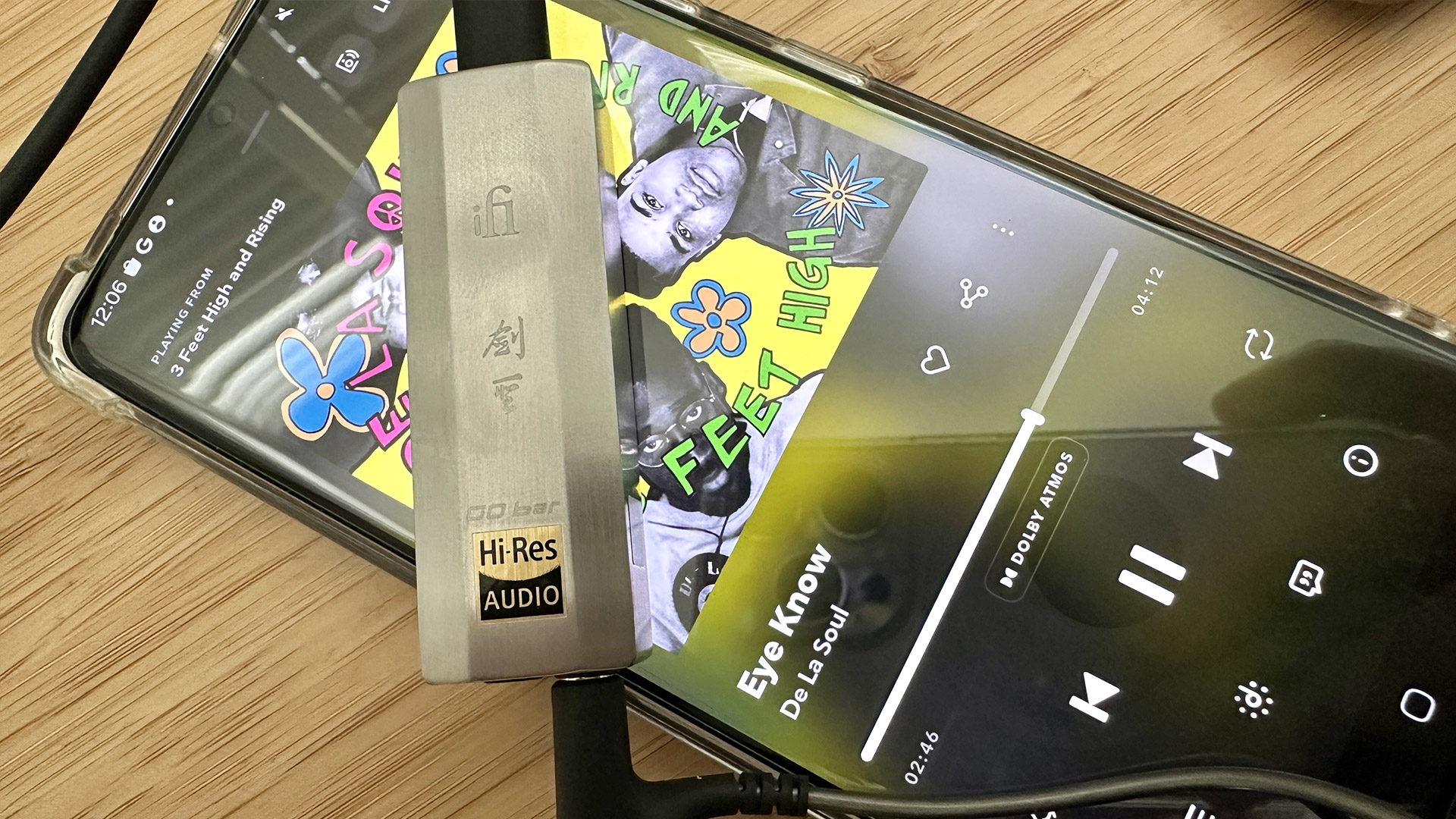
- Plug your source into the USB-C input…
- Plug your headphones into the 3.5mm or 4.4mm output…
- …and select your ‘IEMatch’ position
‘Setup’ is to overstate what’s required here. The GO Bar Kensei attaches to your source player via its USB-C slot (iFi provides short, good-quality USB-C/USB-C and USB-C/Lightning cables for this purpose) and to your headphones using either its 3.5mm unbalanced or 4.4mm balanced output.
Then you simply need to decide if you need to deploy the ‘IEMatch’ switch, and whether or not you enjoy the effect of the ‘XBass+’ and/or ‘XSpace’ settings – and that’s about everything. Audio equipment doesn’t get any more straightforward.
Usability and setup score: 5 / 5
iFi GO Bar Kensei review: Value
- Priced in line with rivals
- Comparative to the cost of a digital audio player
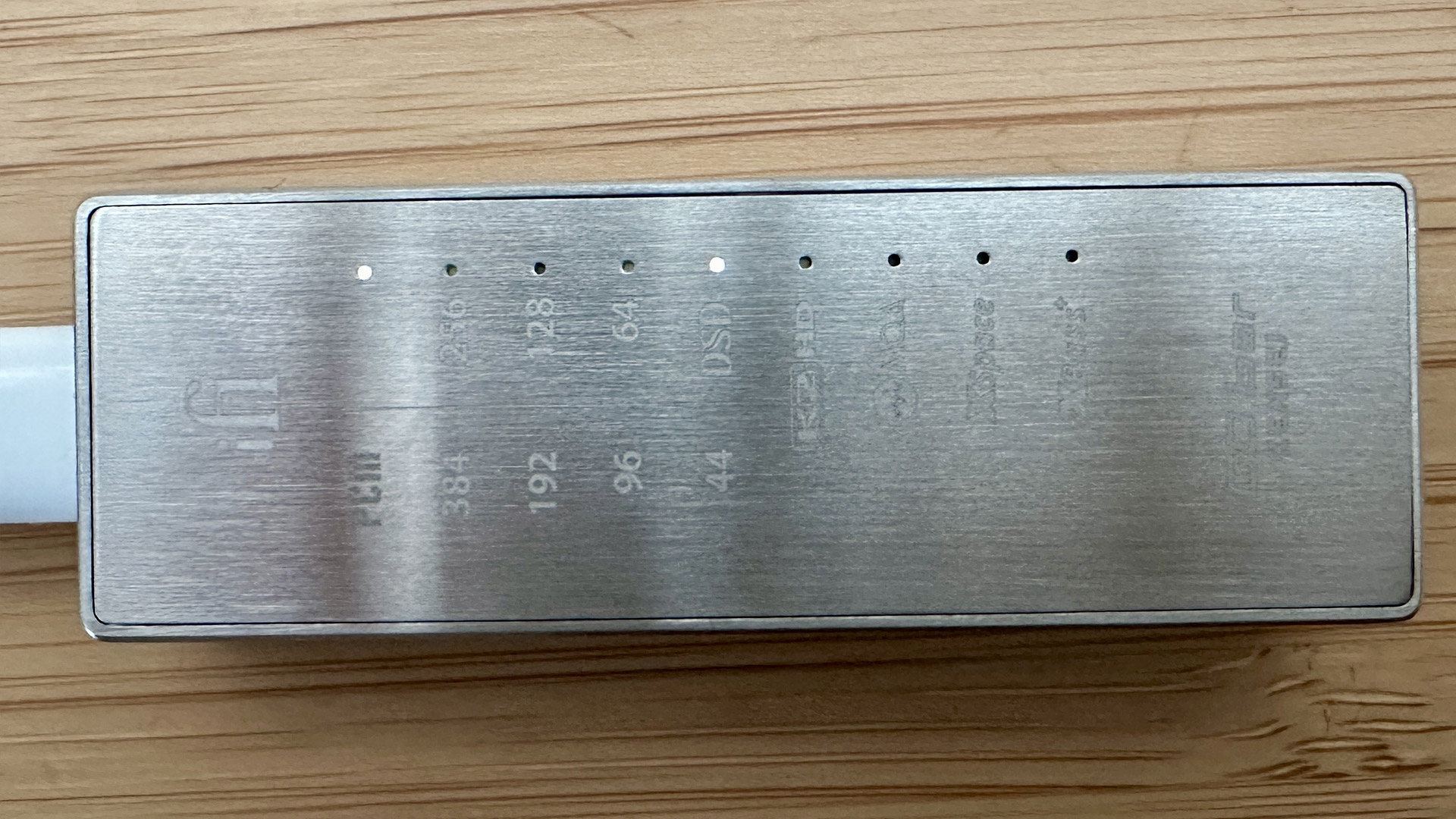
It depends which way you look at it, really. The iFi GO Bar Kensei is among the more capable USB-sized headphone amp/DACs around – although it’s far from perfect – and is able to turn your smartphone into a far better source of music than it’s capable of being by itself.
But it costs the sort of money that can get you close to buying a very decent dedicated portable music player… but if you decide to spend the money on one of the best MP3 players instead, you have to take two phone-sized devices out with you… decisions, decisions…
Should I buy iFi GO Bar Kensei?
Buy it if...
Don't buy it if...
iFi GO Bar Kensei review: Also consider
How I tested the iFi GO Bar Kensei

- Tested for a week
- Used with iPhone 14 Pro and Samsung Galaxy S23
- Listened with Grado SR325x headphones
On and off, I spent maybe a week listening to the GO Bar Kensei. I used it with Apple iPhone 14 Pro and Samsung Galaxy S23 smartphones. I connected it to Sennheiser IE900 in-ear monitors via its 4.4mm balanced output and to a pair of Grado SR325x over-ears using its 3.5mm connection.
I used it while at home, on the street, and on the train. I mostly listened to music from TIDAL and Qobuz (because these streaming services are full of high-resolution content of MQA and 24bit/192kHz standard), and I checked out its various digital filters and analogue processing modes as I did so.
- First reviewed: May 2024
- Read TechRadar's reviews guarantee







